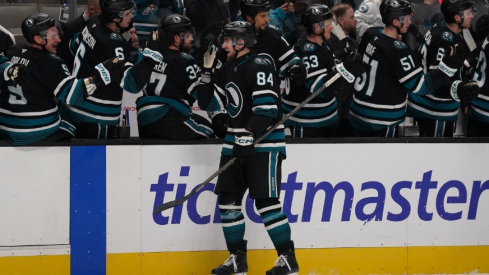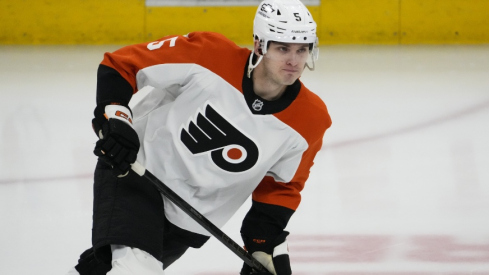There's no question that Columbus Blue Jackets GM Jarmo Kekalainen made the right call by selling off assets at the trade deadline.
He exceeded all expectations, turning veteran UFA bottom-six forward Nick Foligno and second-pairing defenseman David Savard into two first-round, a third-round, and a fourth-round pick. Hell, even acquiring a conditional seventh-round pick for Riley Nash, who may not even play a game until the playoffs begin, was a win.
Collecting draft picks is only the start; converting them into quality NHL players is the real challenge. But having three first-round picks is a hell of a start, and it got me wondering: in recent years, how many NHL teams have had three first-round picks? And further to the point, how have these teams fared?
Luckily for me, The Athletic's Corey Masisak, who covers the New Jersey Devils, had a similar thought about six months ago, just before the 2020 NHL Draft. The Devils, like these Blue Jackets, had three first-round picks. The jury is very much still out on that trio of prospects, just as it will be for the Blue Jackets six months from the 2021 NHL Draft.
As Masisak notes, "An NHL team has owned three first-round picks 15 times in the salary cap era. That team has made three first-round selections seven times, meaning at least one of the three has been traded away 50 percent of the time."
That's a fascinating statistic, and it suggests that teams with three first-round picks are often optimistic that they can expedite their rebuild (retool?). Kekalainen is no different and has made it known that he'd be willing to part with a first-round pick for immediate roster help, either from a team struggling to navigate the salary cap or a team in an expansion cap bind. In both cases, it would be optimistic to assume that Kekalainen and company will be able to find such a player. Is it possible? Sure. Is it likely? I'll believe it when I see it.
What makes the Blue Jackets situation so interesting is attempting to understand where management believes this team is - and is heading - in the short term. Is Seth Jones willing to sign long-term (and if so, would a massive contract even be the prudent play?)? Are Patrik Laine and Max Domi part of the future of this club? Is there even one NHL center on the current roster?
Put simply, should the Blue Jackets be interested in a re-tool, or does a full-on rebuild make more sense? We won't have the answers to these questions imminently, but a brief history lesson shows roughly what the Blue Jackets can expect.
In 2011, the Blue Jackets (in Kekalainen's first draft with Columbus, no less) selected Alexander Wennberg, Kerby Rychel, and Marko Dano. Rychel and Dano are out of the NHL, and Wennberg - though he has revitalized his game in Florida - is a third-line center. Not ideal production from three top-30 picks.
In 2013, the Calgary Flames picked Sean Monahan sixth overall, Emile Porier 22nd, and Morgan Klimchuk 28th. This team stands out, because picking 6th, 22nd, and 28th could wind up being very similar to the Blue Jackets' eventual three picks.
In 2015, the Boston Bruins had three consecutive (!) first-round picks, and chose to pick all three. They selected Jakub Zboril, Jake DeBrusk, and Zach Senyshyn, painfully passing on Mathew Barzal, Kyle Connor, and Thomas Chabot (Shoutout Boston for being a legitimately good team every year since 2015 despite all that).
In 2018, the New York Rangers had three first-round picks, but also made a trade moving up from 26th to 22nd in the draft. That trade is proving fruitful, as they selected K'Andre Miller, a promising defenseman that was well worth the pick. The jury is still out on Nils Lundkvist, who was taken 28th, and Vitaly Kratsov, who was picked 9th overall, is getting his start in the NHL this season with 10 games under his belt.
The last case study worth mentioning is the 2015 Buffalo Sabres, who selected Jack Eichel second, then traded the 21st and 26th overall picks. Like the 2013 Flames, the Blue Jackets could easily find themselves picking somewhere similar to 2, 21, and 26. But let this draft be a cautionary tale. In an attempt to speed up their rebuild, the Sabres traded picks that eventually became Colin White and Jack Roslovic.
For the Blue Jackets, the good news is that having three first-round picks is quality draft capital. Teams are consistently willing to part with roster players or quality prospects for first-round picks, and Kekalainen may be able to use that to his advantage.
But the bad news is that more often than not, teams with three first-round picks are lucky to come out of the draft with one quality NHL player, much less three. Adjust your expectations accordingly.


